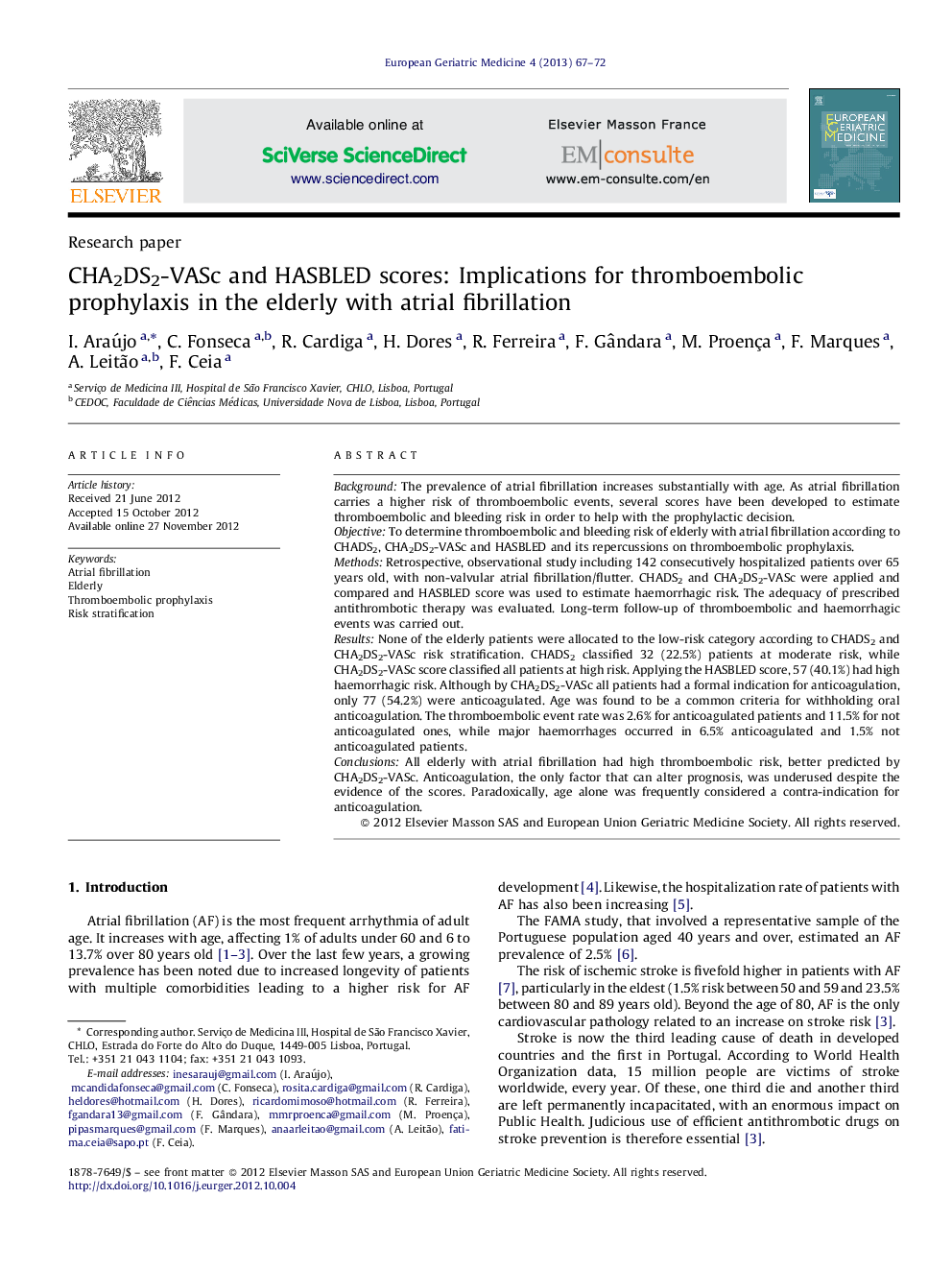| کد مقاله | کد نشریه | سال انتشار | مقاله انگلیسی | نسخه تمام متن |
|---|---|---|---|---|
| 3324248 | 1211958 | 2013 | 6 صفحه PDF | دانلود رایگان |

BackgroundThe prevalence of atrial fibrillation increases substantially with age. As atrial fibrillation carries a higher risk of thromboembolic events, several scores have been developed to estimate thromboembolic and bleeding risk in order to help with the prophylactic decision.ObjectiveTo determine thromboembolic and bleeding risk of elderly with atrial fibrillation according to CHADS2, CHA2DS2-VASc and HASBLED and its repercussions on thromboembolic prophylaxis.MethodsRetrospective, observational study including 142 consecutively hospitalized patients over 65 years old, with non-valvular atrial fibrillation/flutter. CHADS2 and CHA2DS2-VASc were applied and compared and HASBLED score was used to estimate haemorrhagic risk. The adequacy of prescribed antithrombotic therapy was evaluated. Long-term follow-up of thromboembolic and haemorrhagic events was carried out.ResultsNone of the elderly patients were allocated to the low-risk category according to CHADS2 and CHA2DS2-VASc risk stratification. CHADS2 classified 32 (22.5%) patients at moderate risk, while CHA2DS2-VASc score classified all patients at high risk. Applying the HASBLED score, 57 (40.1%) had high haemorrhagic risk. Although by CHA2DS2-VASc all patients had a formal indication for anticoagulation, only 77 (54.2%) were anticoagulated. Age was found to be a common criteria for withholding oral anticoagulation. The thromboembolic event rate was 2.6% for anticoagulated patients and 11.5% for not anticoagulated ones, while major haemorrhages occurred in 6.5% anticoagulated and 1.5% not anticoagulated patients.ConclusionsAll elderly with atrial fibrillation had high thromboembolic risk, better predicted by CHA2DS2-VASc. Anticoagulation, the only factor that can alter prognosis, was underused despite the evidence of the scores. Paradoxically, age alone was frequently considered a contra-indication for anticoagulation.
Journal: European Geriatric Medicine - Volume 4, Issue 2, April 2013, Pages 67–72